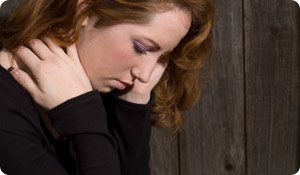
Ovarian cysts are common for women during childbearing years, but most never realize they have them. Occasionally one can rupture, though, causing severe pain and serious side effects. So, when is an ovarian cyst an emergency-and how do you know if you have one?
The ovaries are two small organs located on either side of the uterus. An ovarian cyst is a sac or pouch filled with fluid or other tissue that forms on the ovary. It's normal for small cysts to develop on the ovaries. In most cases, cysts are harmless and go away on their own. In other cases, though, they require treatment.
Surprisingly, forming cysts is part of the ovary's job as the egg-makers in a woman's reproductive system. According to the American College of Obstetrics and Gynecology, there are different types of ovarian cysts. Most are benign (not cancerous). Rarely, they turn are malignant (cancerous). While ovarian cancer is extremely rare in young women, risks go up as women age. Rule of thumb? While most cysts are harmless, all cysts should be checked by a health care provider.
The most common type of ovarian cyst is called a functional cyst because it forms as a result of ovulation, a normal function. Each month, an egg, encased in a sac called a follicle, grows inside the ovary. The egg is released from the ovary at the middle of the menstrual cycle.
Dermoid Cysts are usually small ovarian cysts (some are present since birth but only start growing after puberty) that form from cells capable of developing into different kinds of tissue, such as skin, hair, fat, and teeth. If they become large, they can become painful.
Cystadenomas are usually benign cysts that develop on the outside of the ovary and are filled with a watery fluid or thick, sticky gel. They can grow very large and cause a great deal of pain.
Endometriomas are ovarian cysts caused by endometriosis (tissue that usually lines the uterus sometimes grows in areas outside of the uterus, such as the ovaries). Endometriomas grow in response to hormones and can become blood-filled sacs.
Polycystic Ovarian Syndrome (PCOS) is a complicated hormonal condition that causes many small cysts to form on the ovaries but prevents them from completing their normal reproductive cycle. It's associated with increased hair growth, obesity, diabetes, acne, infertility, and other health issues.
Most ovarian cysts are small and don't cause symptoms. Sometimes however, they ache or cause sharp pain in the abdomen. Large cysts can twist, decrease ovarian circulation and become very painful. Cysts that bleed or rupture can cause severe pain and lead to serious complications.
The most common seven symptoms of ovarian cysts are:
Pelvic Pain-constant or intermittent, dull or sharp low abdominal pain that might radiate to your back or thighs.
Irregular periods
Unusual pain before or after your period
Pain with sex
Pain with bowel movements
Rectal or bladder pressure, fullness in the abdomen
Nausea, vomiting or breast tenderness (similar to pregnancy symptoms)
See a doctor immediately if you have:
- Sudden, severe abdominal or pelvic pain
- Pain accompanied by fever or vomiting
- Signs or symptoms of shock: cold, clammy skin, rapid breathing, dizziness or weakness





